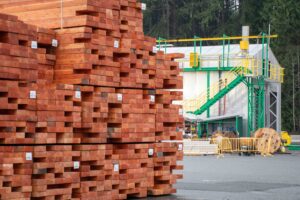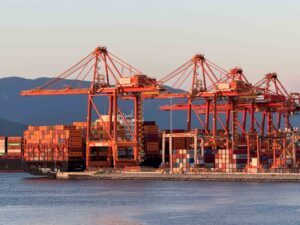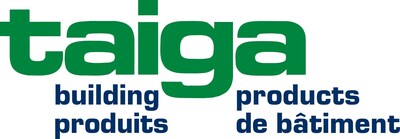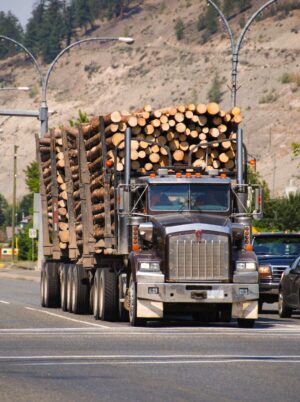 Following Tree Frog News’ November 7 op-ed, “Rigged by Design? How Method and Policy Keep U.S. Lumber Duties High”, the US Lumber Coalition responded (Understanding Why Duties Persist — Not Because of Arbitrary Math, But Because of Past and Ongoing Harm) noting that the Department of Commerce did not use “zeroing” in its latest anti-dumping calculation. The note below clarifies what Commerce actually applied and what remains unresolved.
Following Tree Frog News’ November 7 op-ed, “Rigged by Design? How Method and Policy Keep U.S. Lumber Duties High”, the US Lumber Coalition responded (Understanding Why Duties Persist — Not Because of Arbitrary Math, But Because of Past and Ongoing Harm) noting that the Department of Commerce did not use “zeroing” in its latest anti-dumping calculation. The note below clarifies what Commerce actually applied and what remains unresolved.
Following publication, the US Lumber Coalition pointed out that the Department of Commerce did not use “zeroing” in its latest anti-dumping calculation. In reviewing the record, Tree Frog News found that Commerce applied a differential-pricing framework, which uses statistical tests to determine comparison methods.¹ However, a 2020 WTO panel found that this framework could produce mathematically similar distortions to zeroing — in effect, “replicating the problem without using the name.”² but because the most recent review record is largely redacted and the WTO Appellate Body remains inactive, there has been no external review of how this method performed in the most recent review.
The more important question, then, is whether the procedural change has addressed the sources of bias identified in past WTO rulings — specifically in how Commerce calculates anti-dumping margins, measures subsidies, and selects its review periods — which continue to produce duty levels that appear inconsistent with actual market conditions. Tree Frog News will continue to report as new information emerges.

 Canada’s forestry industry plans to divert a significant share of its wood exports from the US to new international markets. …The aim to send some 1bn board feet to alternative markets underscores how Trump’s tariffs are starting to reshape some global supply chains, although tensions between the US and Canada over wood exports have simmered for more than half a century. …“The US simply needs to fact-check better before they end up with a large shortage of lumber that may cause further housing shortages,” said Rick Doman, chair of FII BC. …Zoltan van Heyningen for the US Lumber Coalition said the American timber industry could replace 1bn board feet of Canadian imports “without batting an eyelid”. …The NAHB says at just 64% of capacity it “will take years” for US domestic lumber production to expand to meet industry demands. …Mike McDonald, a UK-based consultant, acknowledged it would take time to establish confidence among European consumers. [to access the full story a FT subscription is required]
Canada’s forestry industry plans to divert a significant share of its wood exports from the US to new international markets. …The aim to send some 1bn board feet to alternative markets underscores how Trump’s tariffs are starting to reshape some global supply chains, although tensions between the US and Canada over wood exports have simmered for more than half a century. …“The US simply needs to fact-check better before they end up with a large shortage of lumber that may cause further housing shortages,” said Rick Doman, chair of FII BC. …Zoltan van Heyningen for the US Lumber Coalition said the American timber industry could replace 1bn board feet of Canadian imports “without batting an eyelid”. …The NAHB says at just 64% of capacity it “will take years” for US domestic lumber production to expand to meet industry demands. …Mike McDonald, a UK-based consultant, acknowledged it would take time to establish confidence among European consumers. [to access the full story a FT subscription is required]
 HONG KONG — It is an image that just a year ago would have seemed unfathomable: the Canadian and Chinese leaders standing side by side. …The tide began turning early last month… Prime Minister Carney and leader Xi Jinping met on the sidelines of the Asia-Pacific Economic Co-operation summit in South Korea – the first time leaders of the two countries had met in eight years. …That has since been followed by another ministerial visit to China. China also reinstated Canada to its approved travel list for tour groups. …But as leaders in Ottawa and Beijing signal it may be time to start doing business again, some experts warn China could be attempting to exploit Canada at a vulnerable moment. …Meanwhile, the US has increasingly ramped up its economic war on its northern neighbor. …Beijing has said it will drop the canola tariffs if Ottawa does the same for Chinese electric vehicles.
HONG KONG — It is an image that just a year ago would have seemed unfathomable: the Canadian and Chinese leaders standing side by side. …The tide began turning early last month… Prime Minister Carney and leader Xi Jinping met on the sidelines of the Asia-Pacific Economic Co-operation summit in South Korea – the first time leaders of the two countries had met in eight years. …That has since been followed by another ministerial visit to China. China also reinstated Canada to its approved travel list for tour groups. …But as leaders in Ottawa and Beijing signal it may be time to start doing business again, some experts warn China could be attempting to exploit Canada at a vulnerable moment. …Meanwhile, the US has increasingly ramped up its economic war on its northern neighbor. …Beijing has said it will drop the canola tariffs if Ottawa does the same for Chinese electric vehicles. CASTLEGAR, BC
CASTLEGAR, BC Members of the management team for West Fraser’s 100 Mile Lumber appeared in front of the District of 100 Mile House Council to answer questions about the permanent closure of their 100 Mile House mill by the end of December. …Mayor Maureen Pinkney began the meeting, noting that the closure is sad news and that she was surprised they were going straight to closure without any curtailment. …Rob Baron, West Fraser’s regional manager of operations, said “The conditions that precipitated the decision to go to permanent closure are really entirely related to long-term viability related to the high cost of saw logs coming to this mill”. …They’re currently getting their shutdown coordinator set up and have resources on site to help their employees through the transition. …Baron said West Fraser doesn’t have any plans for what they’ll be doing with the property in the future, but welcomes anyone interested in the facility to contact them.
Members of the management team for West Fraser’s 100 Mile Lumber appeared in front of the District of 100 Mile House Council to answer questions about the permanent closure of their 100 Mile House mill by the end of December. …Mayor Maureen Pinkney began the meeting, noting that the closure is sad news and that she was surprised they were going straight to closure without any curtailment. …Rob Baron, West Fraser’s regional manager of operations, said “The conditions that precipitated the decision to go to permanent closure are really entirely related to long-term viability related to the high cost of saw logs coming to this mill”. …They’re currently getting their shutdown coordinator set up and have resources on site to help their employees through the transition. …Baron said West Fraser doesn’t have any plans for what they’ll be doing with the property in the future, but welcomes anyone interested in the facility to contact them.












 Zoom Seminar | November 18| 11:30am – 1:00pm| This seminar helps leaders and teams learn to use artificial intelligence to enhance productivity, communication, and operational efficiency. Rather than replacing people, AI can act as a digital teammate, handling routine or repetitive work so humans can focus on creativity, decision-making, and critical thinking. Participants will explore practical ways to use AI tools like ChatGPT, Copilot, and others to streamline workflows in areas such as administration, project management, customer service, and content creation. You will learn: How AI tools like ChatGPT and Copilot work; common misconceptions; How to give clear, effective instructions to AI. Examples of strong vs. weak prompts; Examples of AI applications for administrative tasks, writing, and increasing productivity; and What to include in an internal AI-use framework: approved tools, privacy, and accountability. Safe and unsafe examples. $29 per person (you do not need to be a BC Wood member to participate – Limited to participants from Canada only)
Zoom Seminar | November 18| 11:30am – 1:00pm| This seminar helps leaders and teams learn to use artificial intelligence to enhance productivity, communication, and operational efficiency. Rather than replacing people, AI can act as a digital teammate, handling routine or repetitive work so humans can focus on creativity, decision-making, and critical thinking. Participants will explore practical ways to use AI tools like ChatGPT, Copilot, and others to streamline workflows in areas such as administration, project management, customer service, and content creation. You will learn: How AI tools like ChatGPT and Copilot work; common misconceptions; How to give clear, effective instructions to AI. Examples of strong vs. weak prompts; Examples of AI applications for administrative tasks, writing, and increasing productivity; and What to include in an internal AI-use framework: approved tools, privacy, and accountability. Safe and unsafe examples. $29 per person (you do not need to be a BC Wood member to participate – Limited to participants from Canada only)





 Vernon, Revelstoke and Penticton will be included in a province-wide protest demanding a halt to old-growth logging on Tuesday. In Vernon, it’s being dubbed a “showdown at BC Timber Sales,” and the local organizers, which include the Peachland Watershed Protection Alliance and the Interior Watershed Task Force, are driving that adversarial image home by encouraging protesters to don western garb when they rally outside the Ministry of Forests office from 11 a.m. to 2 p.m. Nov. 18. Similar rallies are being held in Victoria, Nelson, Revelstoke, Smithers, Courtenay, Parksville, Prince George, Grand Forks, Penticton, Port Coquitlam, and Powell River. …Protest organizers took aim at Forestry Minister Ravi Parmar, saying seven B.C. mills have closed during his eight-month tenure. “Meanwhile he is off in Asia promising wood we do (not) have and opening trade offices … promising trees we do not grow,” the press release states. …A website,
Vernon, Revelstoke and Penticton will be included in a province-wide protest demanding a halt to old-growth logging on Tuesday. In Vernon, it’s being dubbed a “showdown at BC Timber Sales,” and the local organizers, which include the Peachland Watershed Protection Alliance and the Interior Watershed Task Force, are driving that adversarial image home by encouraging protesters to don western garb when they rally outside the Ministry of Forests office from 11 a.m. to 2 p.m. Nov. 18. Similar rallies are being held in Victoria, Nelson, Revelstoke, Smithers, Courtenay, Parksville, Prince George, Grand Forks, Penticton, Port Coquitlam, and Powell River. …Protest organizers took aim at Forestry Minister Ravi Parmar, saying seven B.C. mills have closed during his eight-month tenure. “Meanwhile he is off in Asia promising wood we do (not) have and opening trade offices … promising trees we do not grow,” the press release states. …A website, 
 Biologist Amber Peters and the Valhalla Wilderness Society (VWS) screened their highly-anticipated film, Safe Haven: The Rainbow-Jordan Wilderness, about the biodiverse and nearly-untouched inland temperate rainforest just north of Revelstoke. “This is the best example of a fully-intact inland temperate rainforest,” Peters said. … The Rainbow-Jordan is likely “the largest pocket of intact temperate rainforest in the region” around Revelstoke, Wildsight Revelstoke branch manager Reanne Harvey said. “The forest itself has been in that space for over a thousand years.” … The 30-minute film, produced in collaboration with Damien Gillis, advocates for the B.C. government to protect these expanses of hard-to-access and undisturbed old-growth from logging as a Class A provincial park. Unlike an old-growth protected area or Indigenous Protected and Conserved Area, park status would ensure legislated protection for the Rainbow-Jordan, Peters told some 200 attendees at the screening.
Biologist Amber Peters and the Valhalla Wilderness Society (VWS) screened their highly-anticipated film, Safe Haven: The Rainbow-Jordan Wilderness, about the biodiverse and nearly-untouched inland temperate rainforest just north of Revelstoke. “This is the best example of a fully-intact inland temperate rainforest,” Peters said. … The Rainbow-Jordan is likely “the largest pocket of intact temperate rainforest in the region” around Revelstoke, Wildsight Revelstoke branch manager Reanne Harvey said. “The forest itself has been in that space for over a thousand years.” … The 30-minute film, produced in collaboration with Damien Gillis, advocates for the B.C. government to protect these expanses of hard-to-access and undisturbed old-growth from logging as a Class A provincial park. Unlike an old-growth protected area or Indigenous Protected and Conserved Area, park status would ensure legislated protection for the Rainbow-Jordan, Peters told some 200 attendees at the screening. Murray Wilson believes active forest management is crucial to reducing greenhouse emissions. The connection between the two is wildfires. “If you can reduce wildfires, just on carbon alone – your CO2 emissions – you’re doing a good thing,” said the retired Vernon forester… For the past year, Wilson has been sharing this message, about the need for active forest management, with residents and politicians through his new and first film, the documentary B.C. is Burning. …The Shuswap Climate Action Society, Forsite Consultants Ltd. and Canoe Forest Products will present the film in Salmon Arm on Nov. 26, with a Q&A moderated by Salmon Arm Mayor Alan Harrison. …Wilson will be screening the documentary at the B.C. Legislature. He said government officials, including B.C. Wildfire assistant deputy minister Rob Schweitzer, featured in the film, have taken part in past screenings and question periods. He views this as a sign the documentary is resonating with the Province.
Murray Wilson believes active forest management is crucial to reducing greenhouse emissions. The connection between the two is wildfires. “If you can reduce wildfires, just on carbon alone – your CO2 emissions – you’re doing a good thing,” said the retired Vernon forester… For the past year, Wilson has been sharing this message, about the need for active forest management, with residents and politicians through his new and first film, the documentary B.C. is Burning. …The Shuswap Climate Action Society, Forsite Consultants Ltd. and Canoe Forest Products will present the film in Salmon Arm on Nov. 26, with a Q&A moderated by Salmon Arm Mayor Alan Harrison. …Wilson will be screening the documentary at the B.C. Legislature. He said government officials, including B.C. Wildfire assistant deputy minister Rob Schweitzer, featured in the film, have taken part in past screenings and question periods. He views this as a sign the documentary is resonating with the Province. Local residents are invited to share their input on the development of the Mackenzie forest landscape plan (FLP), which will guide long-term forest management in the area. “This is an opportunity for Mackenzie residents to share what matters most about your forests,” said Ravi Parmar, Minister of Forests. “Forests are part of who we are and your voices guide how they’re managed.” People can share their thoughts through a survey, open from Monday, Nov. 10 until Dec. 22, 2025. …FLPs are intended to be developed in partnership with First Nations to ensure meaningful participation in forestry planning and decision-making. Tsay Keh Dene Nation has partnered with the Province on the Mackenzie FLP. Engagement with other First Nations in the area continues. Community engagement is also a key part of every FLP, ensuring everyone in the area has an opportunity to be heard.
Local residents are invited to share their input on the development of the Mackenzie forest landscape plan (FLP), which will guide long-term forest management in the area. “This is an opportunity for Mackenzie residents to share what matters most about your forests,” said Ravi Parmar, Minister of Forests. “Forests are part of who we are and your voices guide how they’re managed.” People can share their thoughts through a survey, open from Monday, Nov. 10 until Dec. 22, 2025. …FLPs are intended to be developed in partnership with First Nations to ensure meaningful participation in forestry planning and decision-making. Tsay Keh Dene Nation has partnered with the Province on the Mackenzie FLP. Engagement with other First Nations in the area continues. Community engagement is also a key part of every FLP, ensuring everyone in the area has an opportunity to be heard.  A First Nations joint-venture forestry company is under fire for its burning practices. C̕awak ʔqin Forestry recently lit up a series of burn piles only a few metres from where a local company turns post harvest wood waste into much needed hogfuel for the Catalyst paper mill. Under provincial guidelines, forest harvesters are supposed to look for grinding or chipping opportunities ahead of burning. Keith Wyton from the local air quality council says local governments should push foresters to not burn. …Forest companies are allowed to pile and burn slash at this time of year, but Wyton wants the BC Government to step in. …C̕awak ʔqin General Manager Geoff Payne said they were operating within provincial guidelines and were permitted to burn. C̕awak ʔqin Forestry is a joint venture between Western Forest Products and the Huu-ay-aht First Nation.
A First Nations joint-venture forestry company is under fire for its burning practices. C̕awak ʔqin Forestry recently lit up a series of burn piles only a few metres from where a local company turns post harvest wood waste into much needed hogfuel for the Catalyst paper mill. Under provincial guidelines, forest harvesters are supposed to look for grinding or chipping opportunities ahead of burning. Keith Wyton from the local air quality council says local governments should push foresters to not burn. …Forest companies are allowed to pile and burn slash at this time of year, but Wyton wants the BC Government to step in. …C̕awak ʔqin General Manager Geoff Payne said they were operating within provincial guidelines and were permitted to burn. C̕awak ʔqin Forestry is a joint venture between Western Forest Products and the Huu-ay-aht First Nation. Trouble in the Headwaters, a 25-minute documentary by Daniel J. Pierce, is coming to Golden! This film sheds light on the disastrous 2018 flood event in Grand Forks, BC, and features UBC forest hydrology and watershed management Professor Dr. Younes Alila. Both Daniel and Younes will be present to introduce the film and answer questions afterwards as part of a panel discussion with local experts and Wildsight’s forestry team. Join us to explore the complex connection between clearcut logging and the increasing frequency of floods, landslides and droughts across our province.
Trouble in the Headwaters, a 25-minute documentary by Daniel J. Pierce, is coming to Golden! This film sheds light on the disastrous 2018 flood event in Grand Forks, BC, and features UBC forest hydrology and watershed management Professor Dr. Younes Alila. Both Daniel and Younes will be present to introduce the film and answer questions afterwards as part of a panel discussion with local experts and Wildsight’s forestry team. Join us to explore the complex connection between clearcut logging and the increasing frequency of floods, landslides and droughts across our province. 
 ALBERTA — Crowsnest Pass, the lowest pass through the Rocky Mountains between New Mexico and Jasper National Park, is home to Alberta’s rarest, most tree-species-rich forest. Some species growing here are as rare in Alberta as sage grouse and woodland caribou. …Trees don’t thrive within this forest. They cling to life. …A question I’ve long posed to society and the managers of southwestern Alberta’s matchstick forest is this: Is it economically viable to manage this forest for timber production? …Some years ago, I was selected to sit on a Government of Alberta advisory committee creating a vision for future management of this forest. …Alberta’s forest managers, responding to the problem they helped create, have now placed a new prescription on the pharmacist’s cutting block. The old prescription — clear-cut logging. The new prescription — profoundly expanded clear-cut logging.
ALBERTA — Crowsnest Pass, the lowest pass through the Rocky Mountains between New Mexico and Jasper National Park, is home to Alberta’s rarest, most tree-species-rich forest. Some species growing here are as rare in Alberta as sage grouse and woodland caribou. …Trees don’t thrive within this forest. They cling to life. …A question I’ve long posed to society and the managers of southwestern Alberta’s matchstick forest is this: Is it economically viable to manage this forest for timber production? …Some years ago, I was selected to sit on a Government of Alberta advisory committee creating a vision for future management of this forest. …Alberta’s forest managers, responding to the problem they helped create, have now placed a new prescription on the pharmacist’s cutting block. The old prescription — clear-cut logging. The new prescription — profoundly expanded clear-cut logging.
 BELÉM, Brazil
BELÉM, Brazil WorkSafeBC has fined the Provincial Government over $750,000 in connection with a pair of incidents involving the BC Wildfire Service that date back to 2023. An administrative penalty of $759,369 was levied on Sept. 25 following investigations into the two incidents – one of which led to the death of a firefighter near Fort St. John, while the other could have killed or injured multiple firefighters in the North Shuswap. In that North Shuswap incident, previous inspection reports by WorkSafeBC determined that a group of five Brazilian firefighters became “trapped by extreme fire behavior” during a planned ignition. …WorkSafeBC determined that a lack of planning, training, and communication were all contributing factors. …The other incident dates back to July 28, 2023, when 25-year-old firefighter, Zak Muise, was killed while fighting the Donnie Creek fire. WorkSafeBC determined that neither worker was wearing a helmet, the passenger had not been using a seatbelt, and the passenger-side retention netting had been damaged.
WorkSafeBC has fined the Provincial Government over $750,000 in connection with a pair of incidents involving the BC Wildfire Service that date back to 2023. An administrative penalty of $759,369 was levied on Sept. 25 following investigations into the two incidents – one of which led to the death of a firefighter near Fort St. John, while the other could have killed or injured multiple firefighters in the North Shuswap. In that North Shuswap incident, previous inspection reports by WorkSafeBC determined that a group of five Brazilian firefighters became “trapped by extreme fire behavior” during a planned ignition. …WorkSafeBC determined that a lack of planning, training, and communication were all contributing factors. …The other incident dates back to July 28, 2023, when 25-year-old firefighter, Zak Muise, was killed while fighting the Donnie Creek fire. WorkSafeBC determined that neither worker was wearing a helmet, the passenger had not been using a seatbelt, and the passenger-side retention netting had been damaged.